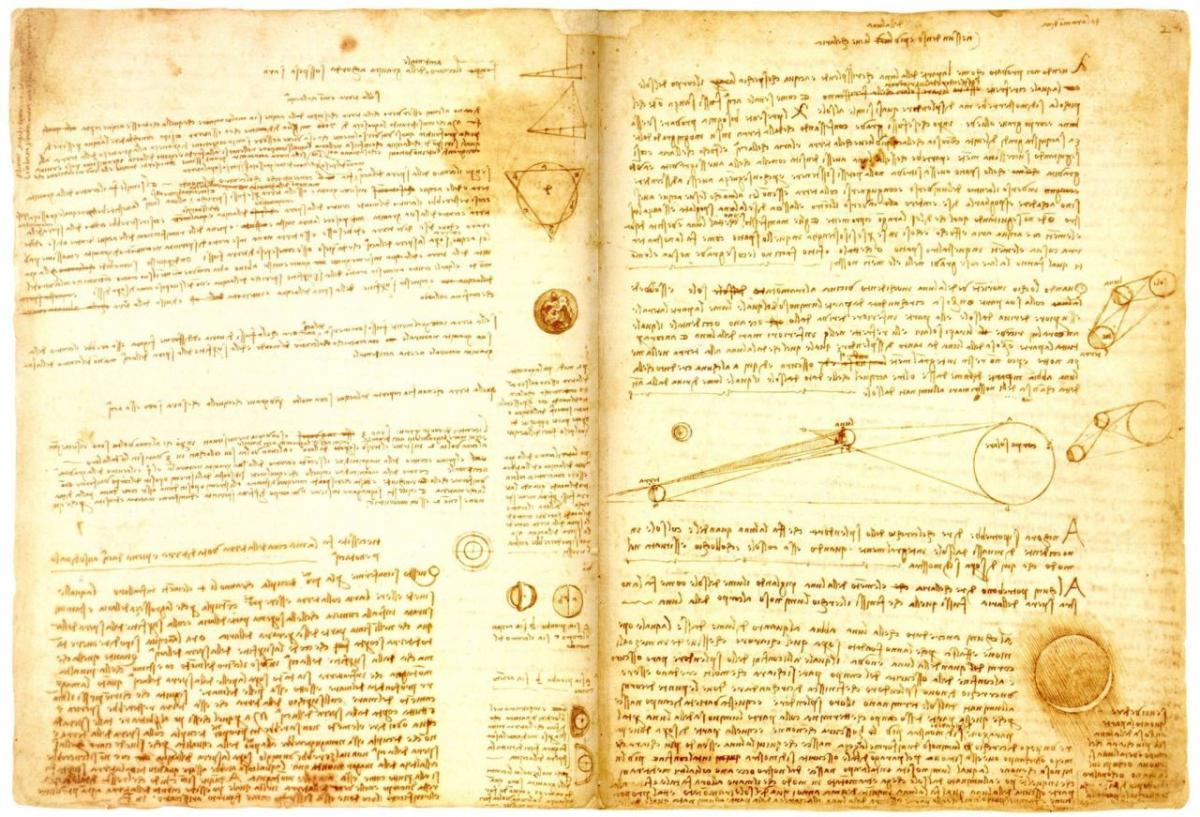One of Leonardo’s most well-known astronomical discoveries resulted from a simple observation any human could have made. Looking up at the night sky, most people today know that the moon goes through different phases depending on how much of the half-lit of the moon we can see. However, even during crescent and new moon phases, the remainder of the moon can be faintly seen. Leonardo was able to piece together that this phenomenon was due to sunlight hitting the Earth and reflecting onto the moon, giving it a dim but noticeable glow, which he titled “Earthshine.” At the time, da Vinci believed that the glow was largely produced by Earth’s seas, as water is useful for reflecting sunlight; it has since been hypothesized and confirmed by astronauts that a large part of reflected light bounces off of the clouds, as can been seen in images of Earth from space where they are much brighter than their surroundings. His drawing of the phenomena and explanation appear in his Codex Leicester, written in the first decade of the 16th century.
Works Cited:
Gallery image taken from Leonardo’s Codex Leicester
Leonardo, Bambach, C., Fiorio, M. T., & Marani, P. C. (2015). Leonardo da Vinci, 1452-1519: The design of the world. Milano: Skira.
Isaacson, W. (2018). Leonardo da Vinci: the biography. London: Simon & Schuster.
Phillips, T. (n.d.). The Da Vinci Glow. Retrieved February 6, 2020, from https://science.nasa.gov/science-news/science-at-nasa/2005/04oct_leonar…


